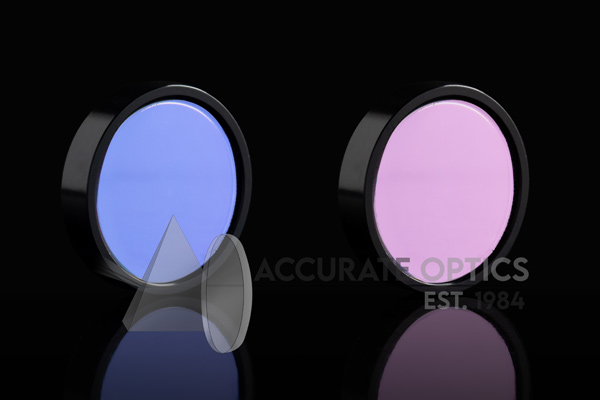What Are The Different Types Of Condenser Lenses?
Condenser lenses play a vital role in optical systems, enhancing illumination and improving image clarity in various applications. As technology advances, an array of condenser lens types has emerged, each designed to meet specific needs. In this comprehensive guide, we will delve into the world of condenser lenses, discussing their various types, applications, and advantages. Whether you are a researcher, photographer, or simply curious about optics, this article aims to help you navigate through the diverse options and find the perfect condenser lens for your needs.
What are Condenser Lenses and How Do They Work?
Condenser lenses are optical components designed to gather and direct light onto the object or sample being observed. They work on the principle of converging light rays, which results in increased illumination and better resolution in optical systems. By focusing light onto the object, condenser lenses improve image contrast and brightness, making them invaluable in microscopy, photography, and other fields requiring precise imaging.
What are the Different Types of Condenser Lenses?
There are several types of condenser lenses available, each with its unique characteristics and applications:
- Achromatic Condenser Lenses: These lenses are designed to correct chromatic aberration, ensuring that light of different colors converges at the same point. Achromatic condenser lenses are commonly used in scientific research and medical microscopy for accurate color rendering.
- Abbe Condenser Lenses: Abbe condensers are known for their high numerical aperture (NA) and are widely used in high-resolution microscopy. They provide exceptional clarity and illumination for observing minute details in biological and material samples.
- Aspheric Condenser Lenses: Aspheric condenser lenses feature non-spherical surfaces, reducing spherical aberration and producing sharper images. They find applications in digital imaging, laser collimation, and optical communication systems.
- Darkfield Condenser Lenses: Darkfield condensers are specialized lenses that create a dark background around the object being observed. They are useful for studying transparent samples and highlighting fine details.
- Kohler Illumination Condenser Lenses: Kohler illumination condensers are popular in research-grade microscopes, offering uniform illumination across the field of view. They improve image quality and reduce glare during observation.
- Swing-Out Condenser Lenses: These lenses can be easily swung in and out of the optical path, providing versatility and quick adjustments in illumination for various applications.
What Are the Applications of Different Types of Condenser Lenses?
The diverse types of condenser lenses find applications in various fields, including:
- Biological Microscopy: Achromatic and Abbe condenser lenses are commonly used in biological microscopy to visualize cell structures, tissues, and microorganisms.
- Material Science: Aspheric condenser lenses play a crucial role in materials analysis, allowing researchers to study the surface properties and microstructures of materials.
- Photography: Condenser lenses with adjustable illumination, like swing-out condensers, are favored in photography for controlling light and shadows in different lighting conditions.
- Darkfield Imaging: Darkfield condenser lenses are ideal for observing transparent samples, such as live cells and microscopic organisms, with enhanced contrast.
How Do I Choose the Right Condenser Lens for My Needs?
Selecting the appropriate condenser lens depends on several factors:
- Application: Consider the primary application of the condenser lens. For biological research, an Abbe condenser might be more suitable, while darkfield condensers are ideal for transparent samples.
- Numerical Aperture (NA): Higher NA condenser lenses provide better resolution and are preferable for high-magnification microscopy and detailed imaging.
- Microscope Compatibility: Ensure that the condenser lens is compatible with your microscope’s mount and illumination system.
- Budget: Different types of condenser lenses come at various price points. Balance your budget with the desired features and performance.
How Can I Maintain and Clean My Condenser Lens?
Proper maintenance and cleaning are essential to ensure the longevity and performance of your condenser lens:
- Handle with Care: Always handle the condenser lens with clean hands and avoid touching the glass surfaces.
- Cleaning Procedure: Use a soft, lint-free cloth or lens tissue and a mild optical cleaning solution to gently wipe the lens surface. Avoid using harsh chemicals or abrasive materials.
- Regular Inspection: Check the lens for dust, dirt, or fingerprints regularly. Clean the lens whenever necessary to maintain optimal performance.
Conclusion
In conclusion, condenser lenses are critical components in optical systems, serving a wide range of applications in various industries. Understanding the different types of condenser lenses and their respective applications can help you make an informed decision when choosing the right condenser lens for your needs. Whether you are exploring the microscopic world in a laboratory or capturing stunning images in photography, the right condenser lens can make all the difference in achieving clear, sharp, and vibrant results. Take the time to evaluate your requirements, consider the available options, and enjoy the enhanced imaging capabilities that condenser lenses bring to your optical setup.








